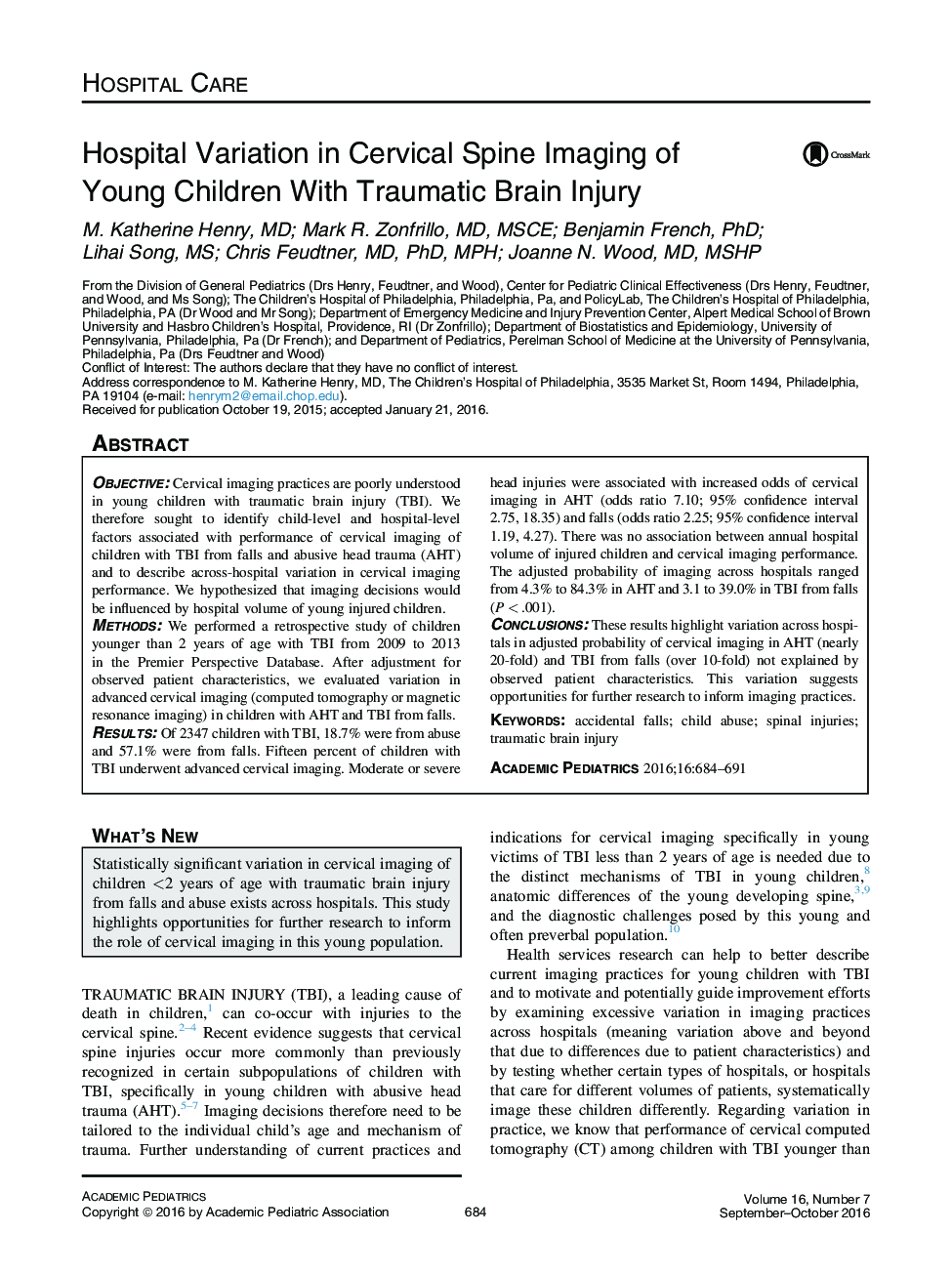| Article ID | Journal | Published Year | Pages | File Type |
|---|---|---|---|---|
| 4138847 | Academic Pediatrics | 2016 | 8 Pages |
ObjectiveCervical imaging practices are poorly understood in young children with traumatic brain injury (TBI). We therefore sought to identify child-level and hospital-level factors associated with performance of cervical imaging of children with TBI from falls and abusive head trauma (AHT) and to describe across-hospital variation in cervical imaging performance. We hypothesized that imaging decisions would be influenced by hospital volume of young injured children.MethodsWe performed a retrospective study of children younger than 2 years of age with TBI from 2009 to 2013 in the Premier Perspective Database. After adjustment for observed patient characteristics, we evaluated variation in advanced cervical imaging (computed tomography or magnetic resonance imaging) in children with AHT and TBI from falls.ResultsOf 2347 children with TBI, 18.7% were from abuse and 57.1% were from falls. Fifteen percent of children with TBI underwent advanced cervical imaging. Moderate or severe head injuries were associated with increased odds of cervical imaging in AHT (odds ratio 7.10; 95% confidence interval 2.75, 18.35) and falls (odds ratio 2.25; 95% confidence interval 1.19, 4.27). There was no association between annual hospital volume of injured children and cervical imaging performance. The adjusted probability of imaging across hospitals ranged from 4.3% to 84.3% in AHT and 3.1 to 39.0% in TBI from falls (P < .001).ConclusionsThese results highlight variation across hospitals in adjusted probability of cervical imaging in AHT (nearly 20-fold) and TBI from falls (over 10-fold) not explained by observed patient characteristics. This variation suggests opportunities for further research to inform imaging practices.
